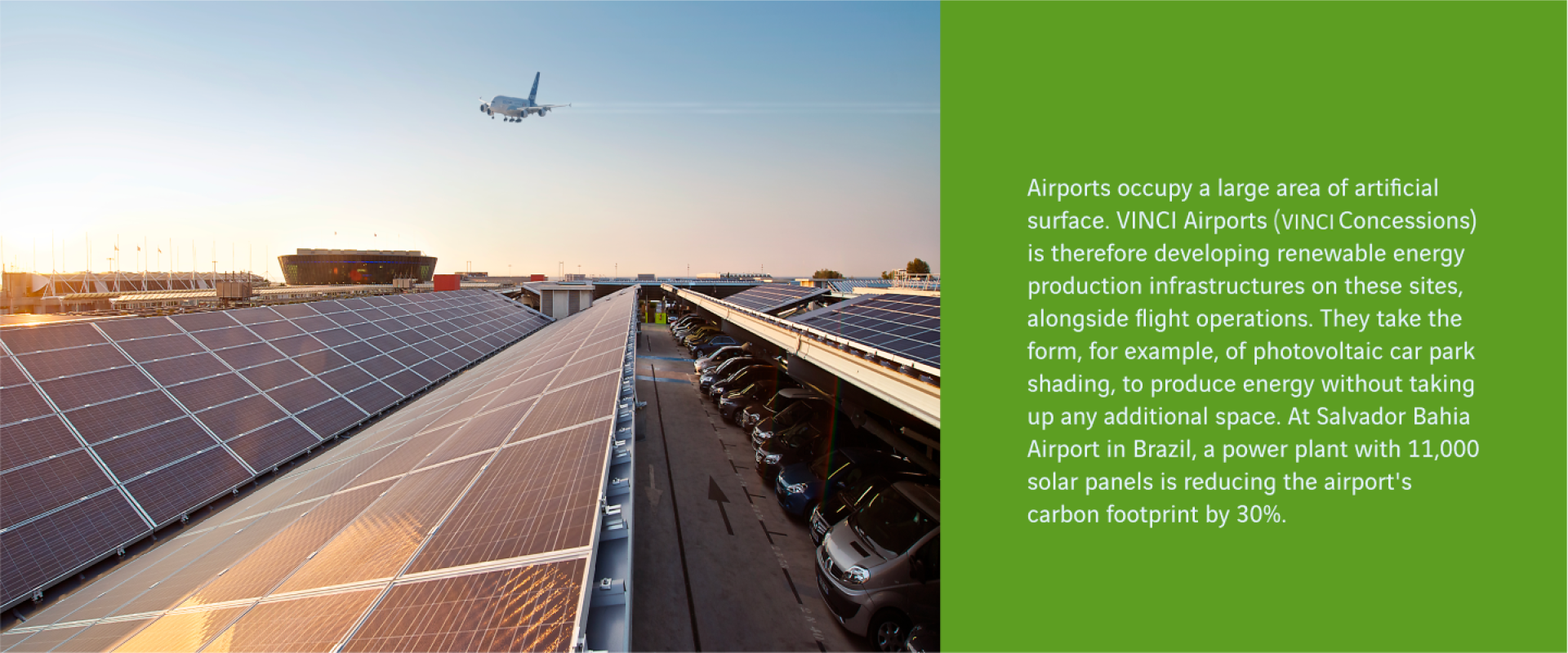
Photovoltaics: space-saving solutions
Although essential to the energy mix and to achieving the objectives of the ecological transition, the development of photovoltaics is faced with a problem... a major one! Installing solar panels requires large areas of land, which is incompatible with another of France's sustainable development commitments: to achieve zero net land take by 2050. But solutions do exist for deploying new photovoltaic farms without increasing the land take.
Increasing tenfold the production of photovoltaic energy by 2050 without a disproportionate land take: this is the delicately balanced equation that a fast-developing industry must solve. Producing solar-generated electricity involves installing large panels, which are essential for capturing as many photons as possible. But where should they be deployed? Conflicts of use can quickly arise between the different functions of the land: agricultural land, building land or other high added-value areas, which can be nibbled away to accommodate photovoltaics.
There is also the added constraint of the zero net land take target set for 2050 by the Climate and Resilience Act. In other words, you can't build on virgin land unless you restore an equivalent area to its natural state. The intermediate objective of this Act is already to halve the rate of land consumption by 2030. In this context, how can we transition from 16 GW of photovoltaic energy in 2022 to more than 100 GW in 2050?
Reducing the footprint of the photovoltaic systems
Faced with this dual requirement, approaches are being developed to identify the hectares that can be made available for photovoltaic systems. Agricultural land and land with major biodiversity issues should therefore be excluded - unless they encourage agrivoltaics, which combines the production of solar energy with the protection of crops from the vagaries of the weather. In order to avoid further land take, we need to look at areas that are already industrialised or developed. And there's no shortage of solutions: roofs of buildings, car park shading, brownfield sites, motorway verges, airport platforms, etc.
Identified secondary land
In March 2023, VINCI Autoroutes announced that, in collaboration with SNCF, it had identified almost 5,000 hectares of available land: 4,000 on the railways and 1,000 on the VINCI Autoroutes network. That's enough to produce 5 GW of solar energy, the equivalent of five nuclear reactors!
VINCI Concessions has also identified a potential area of around 1,200 hectares that could be used to produce low-carbon energy.
Changes in administrative procedures have also accompanied growth in the use of these "secondary" land areas. This is one of the objectives of the Renewable Energy Acceleration Act. With its entry into force on 10 March 2023, it aims to reduce France's lag behind its European neighbours by relying on concrete principles: simplification of authorisation procedures, local planning and mobilisation of areas that have already been developed.

Good to know
Car parks for airports, car-sharing areas, supermarkets or company parking lots: photovoltaic shading systems can be installed on any parking space. Or how to produce energy while protecting vehicles, for example, during hot summer weather, which reduces air conditioning consumption when starting up. A double whammy for the environment!
Most viewed
Explore more
Decontaminating streams and rivers: the way ahead
Several events were held on the Seine during this summer’s Olympic Games 2024 in Paris, highlighting the pollution affecting…
Which action levers can accelerate the development of shared mobility solutions?
Road vehicles are responsible for causing 95% of the CO2 emissions from land transport. Cars are and will continue to be the…
Fundación VINCI Colombia: prioritising education and inclusion
Fundación VINCI Colombia, the Group’s first foundation in Latin America, was created in 2021 by VINCI Construction and…









